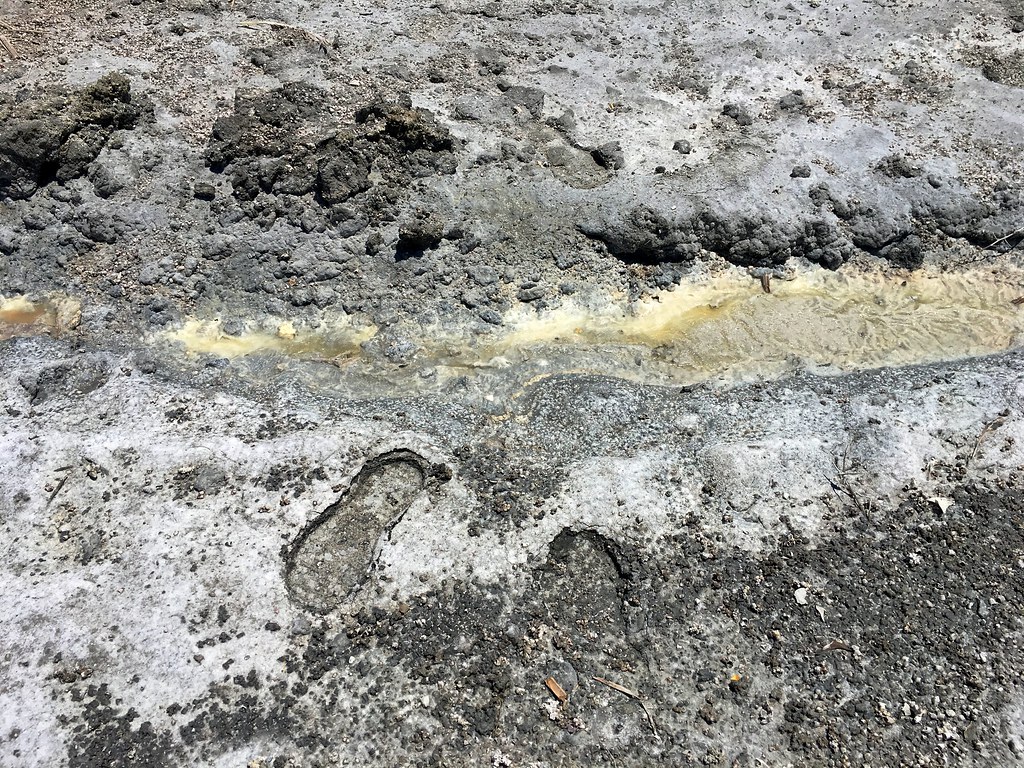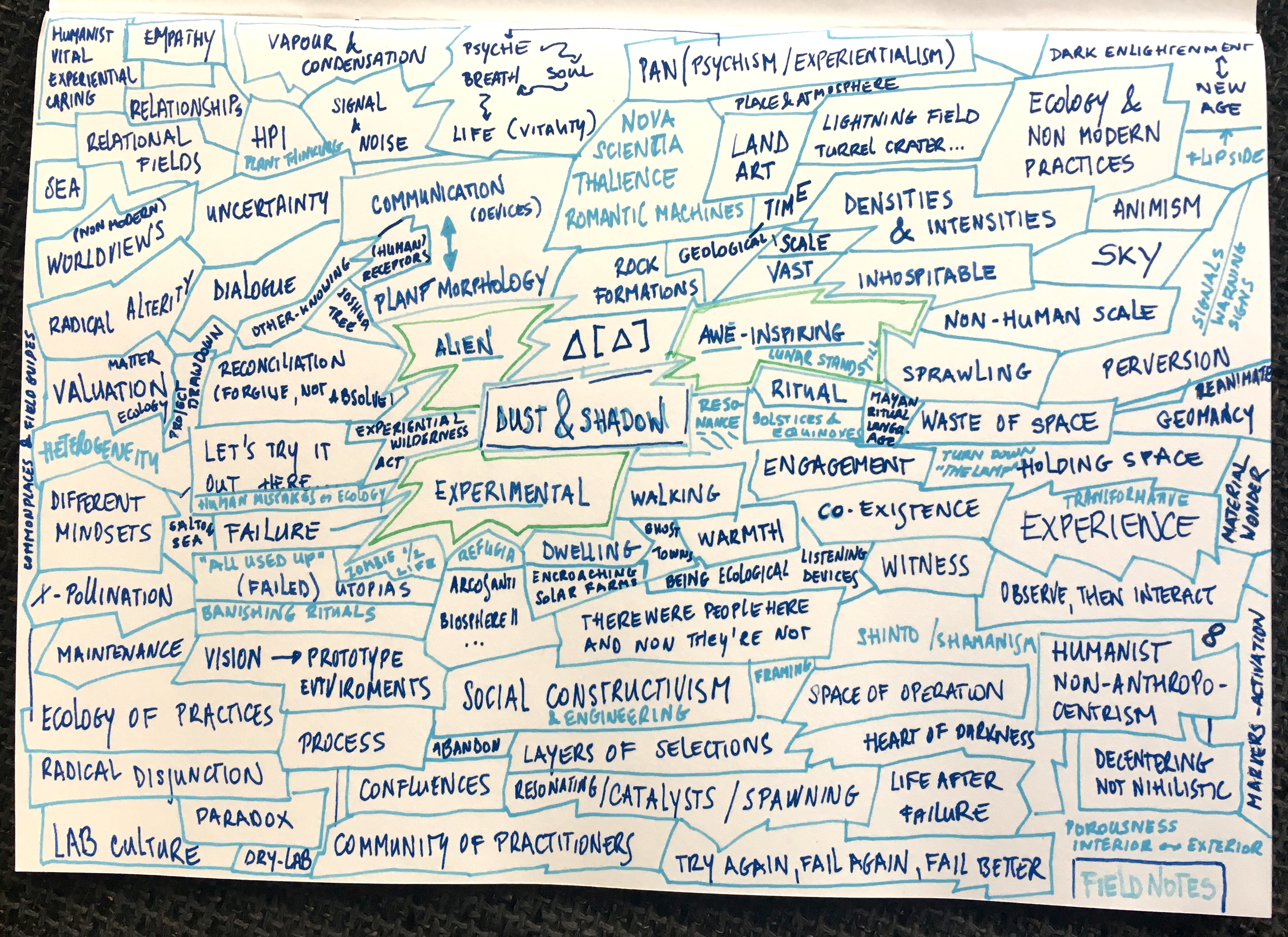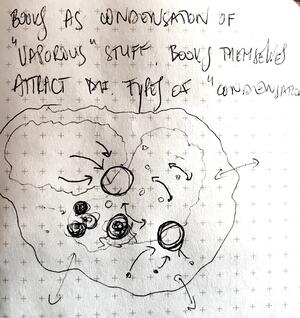This is an old revision of the document!
Table of Contents
Dust and Shadow
Pulvis et umbra sumus. We are but dust and shadow. - Horace
Proposition I
Our inquiry is about changing relationships between human and non-human worlds, in what Whitehead calls “mysterious reality in the background, intrinsically unknowable“. We’re particularly interested in exploring ecological connections between worldviews, including kami (shinto), viriditas (christian mysticism) and panpsychism (philosophy). How can we translate animist or mystical attitudes towards interconnectedness of all life into worldviews compatible with contemporary (or future) techno-materialist societies? What kinds of relationships between human and non-human worlds could be cultivated in an era of mass-extinction? What parallel arts, sciences or technologies become possible if we widen the sentience spectrum? Our focus is on creating experiences to convey or encourage a sense of wonder (e.g. rituals, celebrations, contemplative environments, expeditions, physical narratives, etc). Our media include Romantic Machines, the vegetal mind, expanded publications, human scale systems, non-human technologies and various “disruptive acts of beauty”.
- fragments https://d-u-s-t-and-shadow.tumblr.com

Fieldtrip I
… dust trails / transit / May 02017

Revised itinerary (due to a delayed flight):
- Residency at the Combine Studios in Phoenix
- Oak Creek canyon (mountains/forest)
- Songbird Coffee and Tea House became our 'local' for morning debriefs, mapping, planning, etc.
- James Turrel's Air Apparent
- Casa Grande Ruins (holes / solstice /lunar standstill / ~18.6yrs)
- Road trip along i10
- Drylab2023, (Adiene Jenik’s living water project)
- Joshua tree national park and meeting the park ranger
- Salton sea (and its yacht club)
Planned but not visited:
- High Desert Test Site, Joshua Tree
- Anasazi Archeology
Memorable foods:
- Scottsdale: “modern” Mexican in a suburban mall
- Tempe: Cafe Boa (Italian / Balkan)
- Mecca: simple but delicious Mexican lunch
- Copenhagen airport: Mash

“We no longer have roots, we have aerials. We no longer have origins, we have terminals.” –McKenzie Wark
TBC
How this might unfold…
- Spring 2017 (may/june): fieldtrip, observations, questions, travelogue, etc.
- Summer 2017 (july/august): articulating research questions, literature research, mapping, etc.
- Fall 2017 (november/december): research retreat, formulating hypotheses/propositions for experiments, commonplace publication v.1
- Spring 2018: temporary FoAM lab @ ASU: prototyping, experiment (first iteration), FoAM's 'injections' in (graduate) courses, commonplace publication v.2 (fieldguide for further experiments)
- Fall 2018 (or spring 2019): Second action research cycle, ending in a public experiment, printed publication (and possibly an 'exploded publication' in the form of an exhibition)
- (+ continuous online documentation)

Bibliographic
- romantic machines, panpsychism, animism, etc, vegetal mind, human scale systems, non-human technologies
- the mushroom at the end of the world as counterpoint to in the dust of this planet
- Spiritualise, Revitalising spirituality to address 21st century challenges (RSA report)
- art and witchcraft (and Adam Nocek's Reclaiming Witchcraft)
- The American Wilderness Act of 1964
A wilderness, in contrast with those areas where man and his own works dominate the landscape, is hereby recognized as an area where the earth and its community of life are untrammeled by man, where man himself is a visitor who does not remain. An area of wilderness is further defined to mean in this Act an area of undeveloped Federal land retaining its primeval character and influence, without permanent improvements or human habitation, which is protected and managed so as to preserve its natural conditions and which (1) generally appears to have been affected primarily by the forces of nature, with the imprint of man's work substantially unnoticeable; (2) has outstanding opportunities for solitude or a primitive and unconfined type of recreation; (3) has at least five thousand acres of land or is of sufficient size as to make practicable its preservation and use in an unimpaired condition; and (4) may also contain ecological, geological, or other features of scientific, educational, scenic, or historical value.” - From the American Wilderness Act



